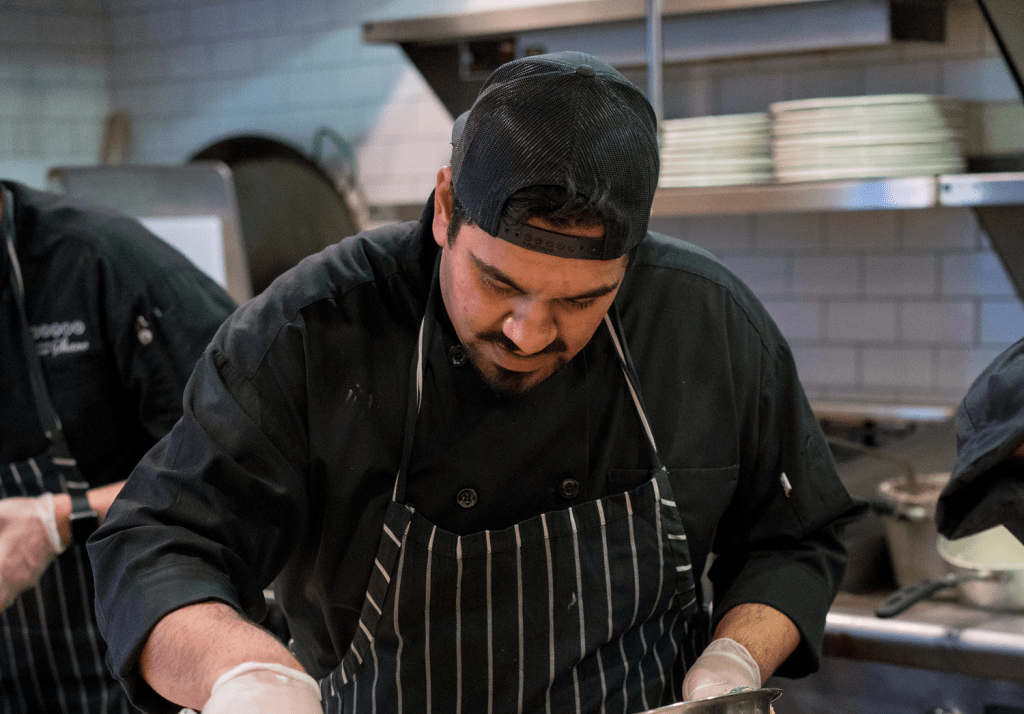Invest in your Restaurant Staff and your Future
Restaurant owners and operators have faced unprecedented challenges this year, with more still to come. 7shifts founder and CEO Jordan Boesch is here to provide data-driven insights into where the foodservice industry is currently at, where it’s headed, and how restaurant operators can get back to ‘business as usual’ amid financial and labour constraints.
As patio season draws to a close and
COVID-19 restrictions begin to change to meet the local market conditions
across Canada, restaurants are facing a new set of challenges aside from simply
staying open or covering rent. This includes how to start (safely) expanding
indoor dining, and making up for the expected loss of outdoor dining spaces as
winter approaches.

Data from a recent Restaurants Canada survey shows that Canadian foodservice sales in April fell by 63% overall, and was down 38% in June. 7shifts collected data from over 15,000 restaurants shows that average restaurant sales in North America have recovered from a low of -79% up to -20%, compared to pre-COVID sales. This data in aggregate shows that the industry is recovering, but there is still a long way to go.
However, a more pressing issue—and one that’s not just impacting the foodservice industry in Canada, but around the world—is the anticipated labour shortage from staff choosing not to return to work. While foodservice employment has recovered from the historic lows of March and April, data from Restaurants Canada revealed that the industry is still down more than 300,000 jobs (around 50%) short of where it was in February.
This labour shortage presents a dual threat for restaurant operators. As governments extend economic relief packages such as CERB for the unemployed—which provide a disincentive to return to work—and employees have (well-founded) fears of return due to health and safety, how can a restaurant operator convince or excite their staff to return to work?
Based on conversations with hundreds of restaurateurs across the country, we have identified a few commonalities that high-performers are doing in order to ensure their staff return when needed.
Create an open and honest dialogue with your team
Communication—or over-communication—with your staff is key to ensuring a successful return to work. Before bringing staff back, it’s critical to ask them what their needs and concerns are, and what you can do to support and address them. Ideally this should take the form of a survey sent to staff where they can relay what is on their minds.
You can create a simple survey using Google
Forms or Typeform for free to gauge everyone’s feelings, fears, availability,
and ideas. Restaurants Canada’s Foodservice Facts 2020 reports that 50% of
employees are concerned about their own health and safety while working with
the public, and 27% are fearful of taking public transport. So determining your
staff’s primary concerns gives you an opportunity to address them. This data
can then help you plan next steps, address specific concerns, or craft
schedules or shifts that make everyone feel comfortable with returning.

Keep this open and honest dialogue going after employees have returned with regular check-ins to see how they’re all doing; this will help send a message of empathy and build a stronger team spirit.
To understand how open communication works in the context of real operations, here are tips from Mattenga’s Pizzeria owner Hengam Stanfield: “Issues of communication, or lack thereof, is very common in the restaurant. If somebody works two hours on a Wednesday and an issue comes up, how are you going to communicate with everybody all the time? That always is an issue. Whenever we give good reviews, [we give] kudos with that, because we always put that in for the whole team to see…Encourage everybody who does well a lot of times. The more communication there is, then there is less doubt and confusion and there’s more clarity.”
Go above expectations to ensure their safety
Your initial communication with staff should also outline your new safety procedures, not just what they need to know about serving customers but how you’re committed to keeping staff safe too so they are comfortable to return. This should include specific instructions regarding the use of PPE and personal safety.
Just like the COVID-19 symptoms screening questions you may have to ask your own guests, you should also be asking them to your staff. 7shifts created Employee Health Check, a tool designed to screen staff for illness before they clock in for their shift. If an employee fails their health check, their manager will receive a notification where they can take appropriate action.
This focus on safety should extend outwards to your community as well. We have seen countless restaurants use the previous months as an opportunity to educate their guests on the steps they have taken to keep them safe. For example, Cilantro & Chive from Lacombe, Alta, created a video which shows every safety measure they are taking to ensure staff and guests are protected.
Improve employee workplace happiness
In 2019, our team at 7shifts conducted a
study of over 1,900 Canadian restaurant workers to determine what specific
things led to increased happiness in the workplace. In an effort to understand
the notoriously high staff turnover rate in the foodservice industry, we wanted
to learn what makes people quit, what motivates people to work hard, and what
ultimately leads to costly turnover.

We found that the most ‘at risk’ employees (those wanting to leave within a year) are affected by their wage; but also by their management—specifically a lack of training, support, and decreased or declining engagement with their role.
As Leanna Rennie, manager of guest service at Taste Restaurant Group in Saskatoon, Sask., puts it: “We…identify and reward highly engaged members of our team while providing the proactive coaching others need to excel at their job. We believe our restaurants are only as good as our people, and Engage is helping us make this possible.”
With these findings in mind—and with many staff not yet back in the workplace—now is a great time to reboot your hiring, training, and promotion strategies in order to entice your staff to return. Restaurant operators should give serious thought to implementing new policies or procedures that previously fell to the bottom of your list. Things such as formalized performance reviews, mechanism for staff feedback, or a structured training regime. When staff see the changes that you are making, they will know your business is invested in them as valued members of the team.
This is even more true for your younger staff. Gen Z workers want to work for businesses that have a mission or vision they believe in, so making sure that your restaurants’ mission and vision are crystal clear will increase the chances that these workers will return.
Restructure your team to spur career progression
Financial uncertainty is top of everyone’s mind right now, not least your staff who rely heavily on tips and often live paycheck to paycheck. While existing pay was not one of the main reasons employees leave a restaurant job in our 2019 survey, a pay rise was strongly correlated with an increased tenure.
From a restaurant owner and operator’s perspective, offering a pay rise to returning staff is a delicate situation as you may have your own financial worries. But with the foodservice labour shortage, you can instead offer extra shifts to those who want them. This is especially useful if not everyone is comfortable returning yet. While it’s not necessarily a pay raise, the extra hours—and extra tips split amongst fewer staff—will make a considerable difference to their paycheck.
With fewer staff to call upon, restaurants are in a unique position where they can optimize their workforce. This is a great opportunity to create a smaller team of all-stars. Extra training and more responsibility mean that staff you return are in a better position to accelerate their restaurant careers than those who wait and sit it out. It’s crucial that you communicate this to staff in order to drive home that this is a learning opportunity not to be missed.
A challenge and an opportunity
2020 has thrown up unimaginable challenges for Canadian restaurateurs, and it’s changed the way we work forever. But, it’s given restaurateurs and restaurant workers an opportunity to reassess how they operate as an industry and individually—it is possible for your restaurant and your staff to come out of this more streamlined, with a smaller, dedicated team that will improve your business in the long run.
If you invest in your team, clearly communicate with them, address their concerns, you will be pleasantly surprised how many of your staff return to active duty, even with uncertainty in the market.







